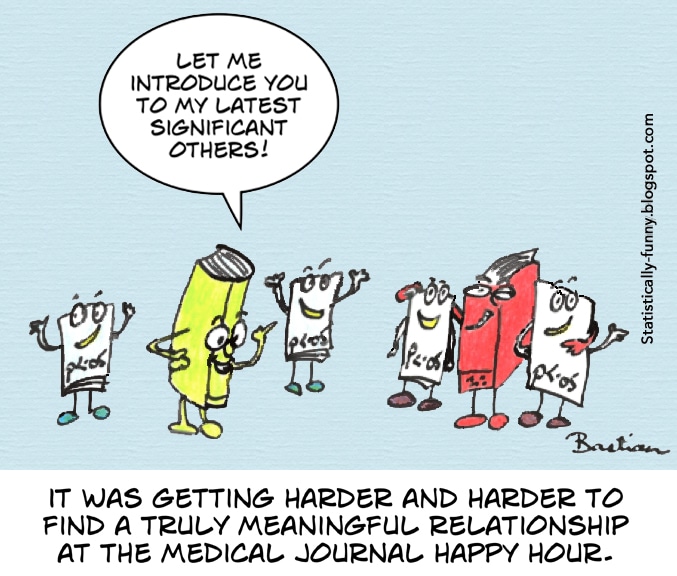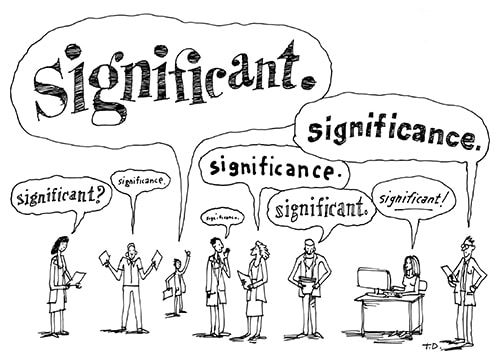The word “significant” is used extensively when reporting the results of a study and discussing them. But when is it acceptable to use “significant”, and when should you use something else?
Most journals specify that the word “significant” should only be used when describing the results of a statistical analysis, otherwise a different word should be used. I’m not a statistician, and this blog is not a lesson in statistics. But we need to cover some fundamentals regarding use of the word “significant”.
The statistician who has analyzed the study data will tell you if the analysis techniques used allow you to report a statistically significant difference. If they do, significance is usually defined with a p-value ≤ 0.05. If p-values were calculated, and the p-value for a particular anaylsis was ≤ 0.05, then yes, you can and should report there was a “significant difference” between the variables. Report the p-value in brackets, immediately after this statement. Accompanying tables should also report p-values, if they were calculated, regardless of whether they reach statistical significance.
It’s important to note that, if the p-values were close to, but larger than 0.05, the difference is not significant. Do not report this as a non-significant trend. If it’s not significant, i.e., p ≤ 0.05, then it’s not meaningful. There is no trend.
A final note with respect to reporting a statistical significance: A difference between two groups may be statistically significant, but this may or may not translate to a clinically meaningful result. Many patient-reported outcome measure questionnaires have been studied to define a minimum clinically important difference (MCID). In your study, a difference of 5 points between two groups may be calculated to be significant (p < 0.05). But a difference of at least 12 points (MCID) may be required to notice a difference in patients, clinically. If that’s the case, then your study showed a statistically significant difference, but it is of no (or limited) value clinically. This consideration should be addressed in the Discussion section of your manuscript.
Many studies now report 95% confidence intervals and/or use error bars, instead of p-values, so that the reader can draw their own conclusions. When reporting the results of such analyses, do not use the word “significant”, as the statistical methodology does not allow you to make this claim. Make sure you have fully defined the meaning of error bars, interquartile ranges, etc.
All right, let’s say your study showed some potentially important or meaningful differences between groups that you’d like to describe, but you couldn’t determine they were significant, statistically, for whatever reasons. And the journal (and my recommendations above) won’t let you use the word “significant” to describe these differences. Here are some other terms you can use instead:
Substantial
Large
Considerable
Notable
Noteworthy
Clinically meaningful (if backed up by citations of MCID calculations)
Even if using these more general, non-statistical words to describe differences, provide the numbers whenever possible. Either in brackets later in the sentence, or by referring to a Table or Figure. If you have numbers available, it’s always best to report them.
Some other terms might work, but be careful when using these, as they suggest a bias or judgement on the value or meaning of the observed difference. Try to limit use of these terms to the Discussion section, where you can explain your rationale and compare to previous studies:
Meaningful
Important
Remarkable
Striking
Major
I hope you found this blog helpful. I look forward to receiving your feedback, and I welcome suggestions for future weekly writing tips.
If you enjoyed this #WeeklyWritingTip and would like to be notified when future writing tips are posted, then check the box under the Stay Up To Date heading at the top right of this page and provide your email address. I promise it won’t be used for any other purpose.



Recent Comments